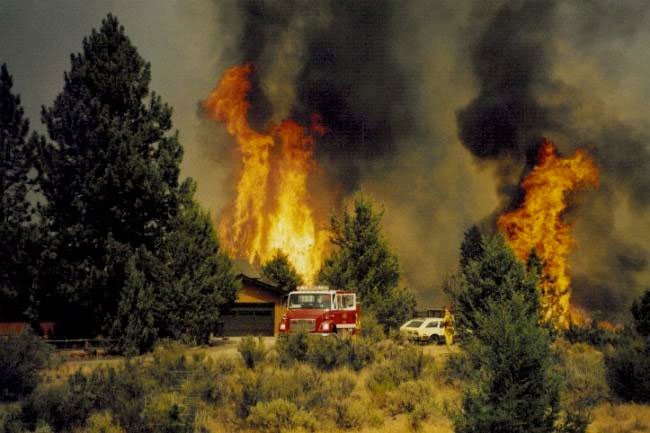
Bend, Oregon
Consistently named one of the best places to live in the U.S., Bend, Oregon is one of the fastest growing municipalities in the nation. With an active fire history throughout the region and recent fires destroying homes and other structures, the challenges associated with the rapid pace of development make planning for wildfire a priority.
After the Skeleton Fire in 1996, which burned 18,000 acres and destroyed 30 structures, several regional and county initiatives were developed to help educate landowners and improve wildfire preparedness, including Project Wildfire and FireFree.
In 2016, the City of Bend took another step toward becoming fire-adapted and became a CPAW community. During a year-long process of collaboration with diverse stakeholders and learning about community conditions, the CPAW team developed recommendations to improve Bend’s land use planning process regarding wildfire. Among the recommendations are:
- Develop an implementation framework (i.e., a citywide Community Wildfire Protection Plan) with detailed, actionable steps to address local wildfire concerns;
- Define the City’s wildland-urban interface (WUI) and develop a WUI risk assessment that delineates risk levels; and
- Develop and adopt future WUI policies and regulations that address newly annexed land as approved by the Urban Growth Boundary expansion plan.
In January 2019, Oregon Building Code’s Division adopted Appendix W (R-327) to increase construction standards for development in wildfire-prone lands. Local jurisdictions determine whether to adopt R-327 with amendments at the community, city, and county level.
During recent years, City staff have endorsed the CPAW recommendations and work continues to improve Bend’s wildfire mitigation efforts. The City is currently collaborating with the local construction community for adoption and amendments to R-327. In addition, Bend continues to expand its outreach and education efforts to increase understanding of wildfire risks, development trends, and land use planning mitigation measures. Encouraged by the CPAW process, Bend’s neighboring community of Sisters applied and was accepted into the program in 2019.
Snapshot
- 2016 CPAW Community
- Population (2014): 81,780
- Growth Rate (2000-2015): 57.2%
- Fuel Type: Pondersoa pine, western juniper, bitterbrush, manzanita, sagebrush
